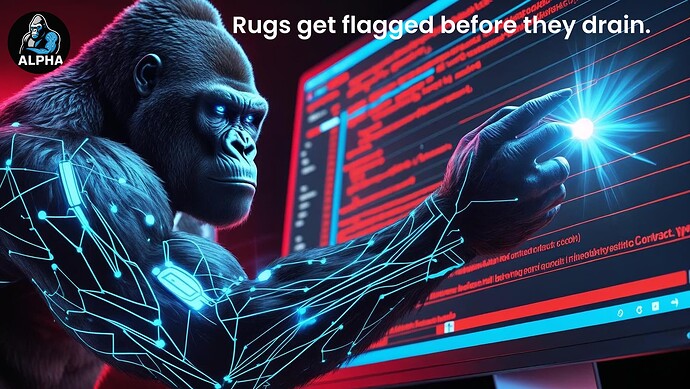The Role of AI in Reducing Rug Pulls on New Ecosystems
New ecosystems are fertile ground for both innovation and exploitation. Fresh liquidity, new users, and rapid growth attract builders, but they also attract scammers. Rug pulls are one of the biggest threats to emerging chains, undermining trust and slowing adoption.
Why Rug Pulls Thrive in New Ecosystems
Early-stage ecosystems often have:
- Less mature security infrastructure
- Communities eager to chase high-yield opportunities
- Limited monitoring tools to detect risky behavior
These conditions create opportunities for malicious actors to deploy contracts, seed liquidity, and exit before anyone can react.
How AI Agents Help
AI agents like ALPHA reduce the risk by acting as real-time watchdogs. They scan the chain continuously, flagging:
- Liquidity anomalies — sudden inflows or outflows from pools
- Suspicious contract patterns — known rug signatures, token mint authority loopholes
- Wallet clustering — multiple wallets funneling into one suspicious address
Instead of relying on after-the-fact reports, AI gives early alerts that communities and protocols can act on immediately.
The Impact for Builders and Users
- Builders gain credibility by integrating AI monitoring into their protocols, signaling commitment to security.
- Users feel safer interacting in an ecosystem where rugs are detected faster.
- Ecosystems grow stronger by protecting liquidity and maintaining trust.
From Reactive to Proactive Security
Rug pulls won’t disappear overnight. However, with AI monitoring, the ecosystem can shift from reacting to losses after they occur to preventing them before they spiral out of control. For new chains like Hyperion, this proactive defense is not optional but essential.
